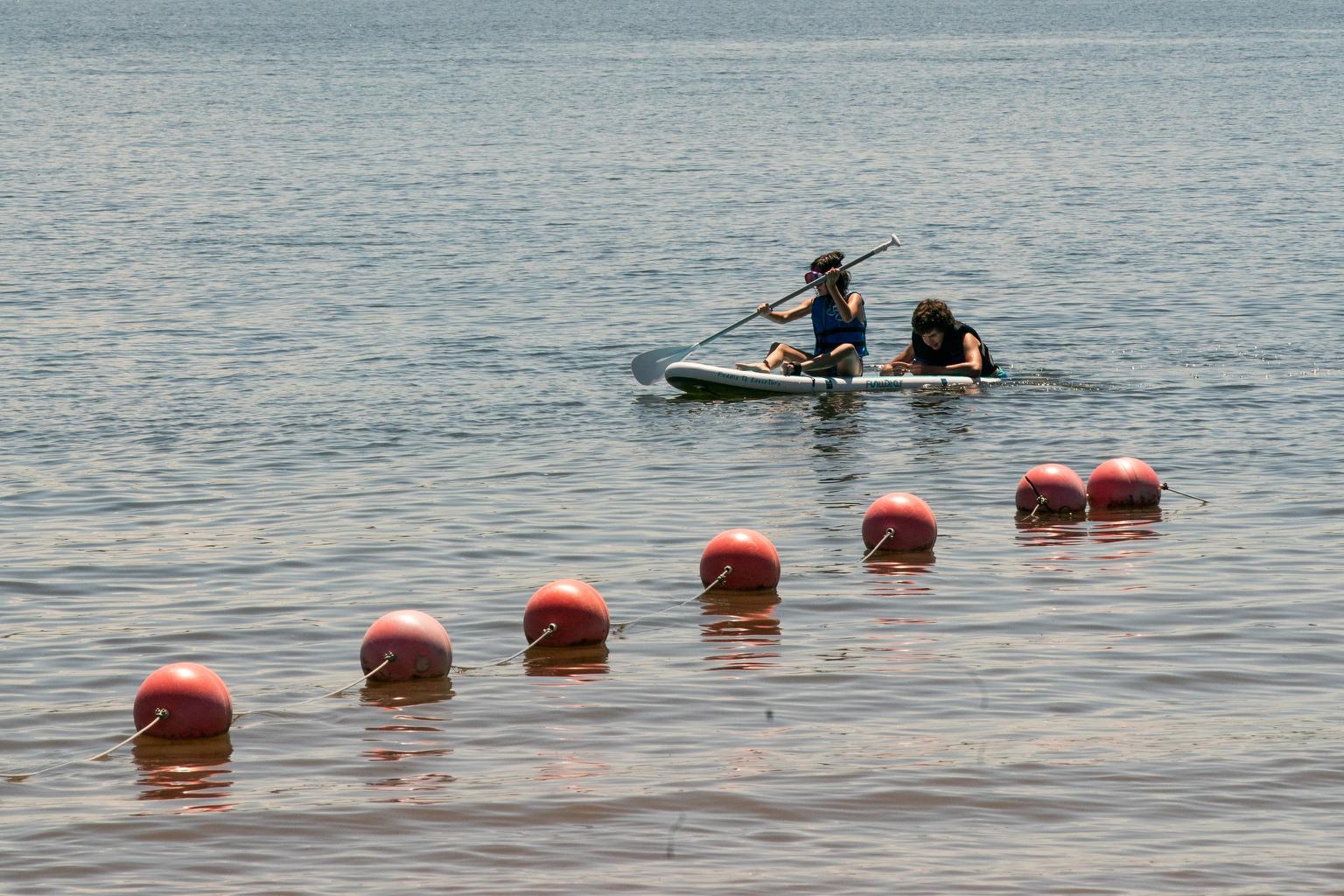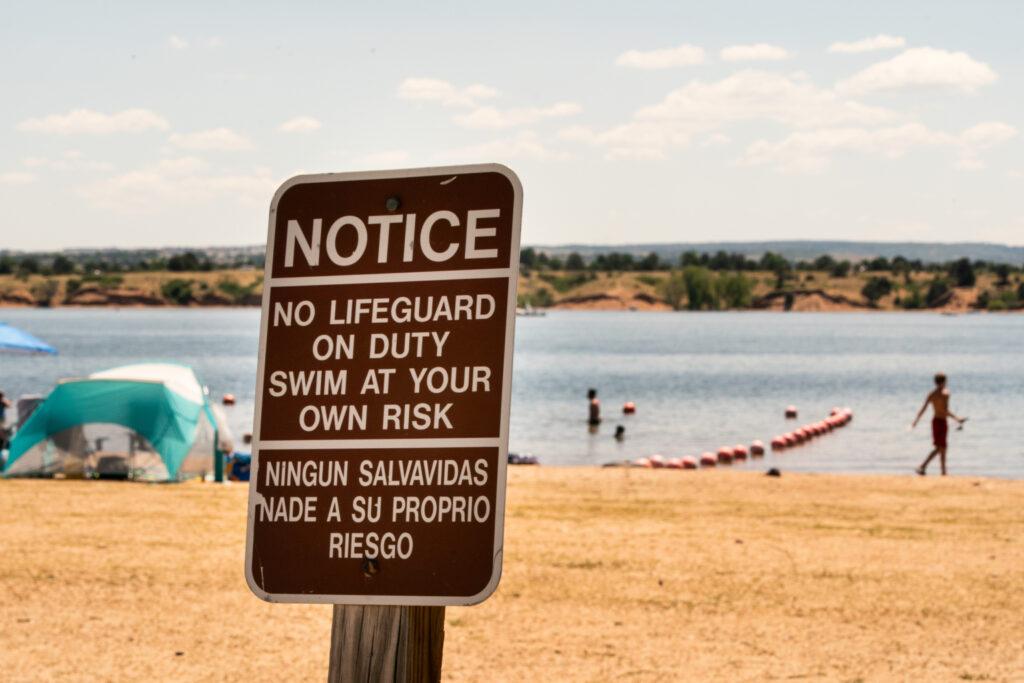
When Claudia Ordóñez got the call that her 22-year-old brother Alan had drowned at Chatfield Reservoir, she couldn’t believe it. He was physically fit, a gym rat who had played varsity soccer at Bruce Randolph High School.
“I was so confused,” said Ordóñez. “I was like ‘He’s a good swimmer. He always goes to the pools with my girls and I, so how is it that he’s drowning?’ It just didn’t make sense to me, and obviously, just the thought of him no longer being here, just like very stressed me out.”
The Jefferson County Sheriff’s Office said that around 4:30 p.m. on June 2, Alan Ordóñez was at the Chatfield swim beach area with friends when he and two others decided to swim out to some trees in the water. About 200 yards out, Ordóñez slipped underwater. His friends tried to help but couldn’t save him. Drugs and alcohol are not suspected.

He was one of 14 drownings so far this year in Colorado state parks or recreation areas, like the Arkansas headwaters area, that are managed by Colorado Parks and Wildlife. That ties the known record for a full year of drownings in those places. And summer is not yet half over.
Alan’s death was a devastating blow to the family — Claudia Ordóñez said her brother bought a home for him and their parents to live in, and her parents don’t know what’s next. A GoFundMe was set up to help the family.
It was one of three water-related fatalities at Chatfield Reservoir this year, one of the deadliest years at the reservoir.
Official statewide records for drownings outside of parks don’t exist, so some drownings may not be included in the numbers kept by CPW. But the 14 in state parks is half of the reported 28 who have died in water this year statewide, a number that could surpass the previously recorded high of 42 from 2022.
Victims died in and out of rafts and other watercraft on swift-moving rivers and creeks, or when hit by boats, while swimming for fun, or in completely mysterious circumstances.
A CPW official speculated that some of the increase in park deaths is a byproduct of greater use of state parks. Through May of this year, more than 5.3 million people had already visited a state park, a slight increase from last year and a number approaching attendance from the first five months of the pandemic years of 2020 and 2021. Parks with lakes and reservoirs, like Chatfield, offer a respite from the heat and are sometimes so full that they reach capacity and people are turned away, especially on holiday weekends.
First responders and state officials have routinely warned visitors that the seemingly placid waters of Lake Pueblo, Cherry Creek Reservoir or Chatfield can actually be quite dangerous. They say check the weather, later afternoon storms sometimes take swimmers and paddleboarders by surprise.
“And so people are out there in the afternoon having a great time and then the thunderstorms can kind of sneak up on them,” said Eric Hurst, a spokesman for South Metro Fire Rescue, which responds to emergencies at Chatfield. “It's those gusty thunderstorm winds that come down, and then all of a sudden the water is really rough for people who are on paddleboards they can get pushed out into the tree area in the lake and out into the middle of the water.”
Hurst said that one of the more frustrating things first responders see is the presence of a lifejacket at fatal drownings, but not being worn.
“We see a lot of people are recreating without personal flotation devices and when they finally get taken by surprise by whatever the thing is they find themselves unprepared and quickly in trouble in the water,” said Hurst.

And so as more people are using the water, Parks and Wildlife have stepped up enforcement. Boating-related citations have more than doubled from 400 in 2020 to 924 in 2023.
Grant Brown, head of boat safety for Colorado Parks and Wildlife said he did a patrol on Memorial Day weekend at Cherry Creek Reservoir and he was shocked by how many paddleboarders he saw — many without a lifejacket, which is the leading citation issued.
“They tell me, ‘Oh, I'm a good swimmer,’ and it just scares me because I think people have this misconception, just ‘cause they can swim they'll be fine in anything,” said Brown.
A paddleboarder died in May in Grass Valley Reservoir on the Western Slope, and another paddleboarder drowned on the Colorado River near Corn Lake.
Brown said many paddleboarders don’t know that the board is considered a vessel, with all the requirements that come with that.
“So you’ve got to have a lifejacket for everyone, you have to have a sound-producing device like a whistle, and you must have your contact information written or affixed to the board permanently,” said Brown.
Still, Ordóñez, whose brother drowned at Chatfield, is left wondering if the state is really doing everything it can to prevent deaths.
When she got the call that her brother was in trouble at Chatfield, she pulled over the car and asked her husband to drive them to the reservoir. Ordóñez said she’s been to the Aurora Reservoir and remembered lots of safety measures, like lifeguards, signs, buoys in the water.
But her initial impression was that Chatfield was different.
“Being there for like 10.5 seconds, I noticed none of that, there’s no lifeguards, no signs,” said Ordóñez.
Brown, with CPW, said the state hasn't had lifeguards since the early 2000s. There are some signs now, but Brown said "we will take all that feedback all the time, and we try to put signage where it needs to be and if we ever need to put more we can."

But Ordóñez also recognizes that people who use the water need to be more cautious. Even the strongest swimmer can get in trouble. So a lifejacket, she said, might be uncool, but the alternative can be devastating.
“Do you really want to give your family that terrible news that you’re no longer here,” said Ordóñez. “Anything can happen and it can happen to anybody. I never thought that anything like this would happen to us, to my brother especially. He still had his whole life ahead of him.”









